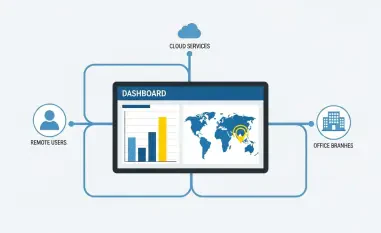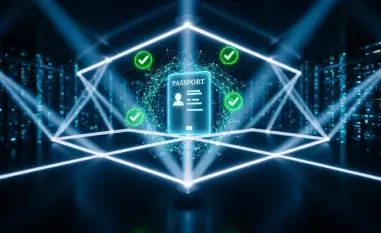The Internet of Things (IoT) continues to grow at an unprecedented pace, fiercely transforming how devices communicate and individuals interact with technology. While the advancements within IoT promise novel opportunities, a disconcerting vulnerability has recently surfaced within Kigen’s eUICC cards. This flaw poses a significant threat to billions of IoT devices, potentially putting sensitive data at risk. This report dives into the current state of the IoT industry, examining the landscape, trends, and the disruptive risks associated with this newfound eUICC vulnerability.
Understanding the IoT Industry Landscape
The IoT industry has witnessed a rapid evolution, with devices becoming smarter and more interconnected. The proliferation of IoT has created a dynamic landscape characterized by innovation and multifaceted use cases, from smart homes to industrial IoT. As the sector evolves, it has attracted diverse players, including tech giants and innovative startups, all navigating a web of regulations designed to ensure security and efficacy. Yet, navigating these regulations remains a challenge, as the industry balances rapid growth with the need for stringent compliance and data security standards.
Key segments such as consumer electronics, healthcare, and industrial IoT underpin the surge in IoT deployment. The regulatory framework, meanwhile, sets the boundaries within which manufacturers and service providers must operate, shaping the development and deployment of IoT technologies. The adherence to these regulations is critical for ensuring the security and reliability of IoT solutions, highlighting the importance of robust and adaptable compliance strategies moving forward.
Current Trends and Market Analysis
Emerging Trends Impacting IoT
The IoT landscape is constantly reshaping through technological advancements that offer new capabilities and improved efficiencies. Market drivers such as artificial intelligence, enhanced processing capabilities, and cloud computing integrate into IoT ecosystems, propelling growth. As consumer behaviors evolve, opportunities abound for IoT solutions that deliver personalized experiences and enhance daily life convenience, which is reflected in the adoption of smart home technologies and wearable devices.
Opportunities for providers and innovators now lie in developing adaptable, user-centric IoT solutions that cater to demands for enhanced connectivity, efficiency, and convenience. This facet of the IoT revolution highlights the sector’s flexibility in responding to emerging consumer trends, signifying potential avenues for growth and expansion.
Market Data and Projections
The IoT market continues its upward trajectory, with growth metrics demonstrating strong global adoption. Recent data indicates substantial increases in device installations and revenue generation across various IoT segments. Projections suggest that this growth will persist, driven by technological upgrades and increased investment in IoT infrastructure. As companies invest in robust IoT ecosystems, future advancements appear promising, with new innovations predicted to further amplify growth.
This positive outlook is cemented by the continuous flow of capital into IoT technology advancements and market expansion. The trajectory suggests a future where IoT devices become increasingly integrated into various facets of life, enhancing efficiency and offering new functionalities.
Challenges and Threats in the IoT Sector
Despite the promising market outlook, the IoT sector faces a host of challenges. Security concerns, particularly those highlighted by the recent eUICC vulnerability, underscore the need for improving IoT device protections. As attackers potentially exploit such flaws, safeguarding sensitive data and device functionality becomes imperative to maintaining trust and operational integrity.
Besides technological challenges, regulatory hurdles present significant obstacles. Market-driven obstacles and evolving legislation require proactive approaches in addressing compliance and security solutions. Organizations must prioritize both adapting to changes and identifying resilient strategies to mitigate risks associated with IoT deployment.
The Regulatory Environment
The regulatory environment around IoT is intricate, with numerous laws and standards guiding device development, deployment, and ongoing management. Robust compliance frameworks are crucial for ensuring security, privacy, and interoperability within IoT ecosystems. Laws like GDPR and regional data protection acts form a foundation for shaping the security and operational standards for IoT devices.
Compliance not only governs industry operations but also shines a light on the broader impacts of regulation—affecting business strategies, consumer trust, and market growth. Industry players must adapt to these evolving regulations, enhancing their security posture and aligning with industry standards to avoid legal pitfalls and reinforce consumer confidence.
Future Directions for the IoT Industry
As industries continue to embrace IoT, future directions are marked by an array of emerging technologies and potential market disruptors. Innovations in areas like artificial intelligence, blockchain, and edge computing hold transformative potential, enabling new applications and services that can redefine industry landscapes. Moreover, consumer preferences are gradually shifting toward seamless, intelligent solutions, opening growth opportunities for adaptive and responsive IoT technologies.
The role of innovation and broader economic factors becomes evident in shaping IoT’s trajectory. Strategic investment in technology development and the exploration of new applications drive progress, setting a foundation for future growth and ensuring that IoT remains a cornerstone of technological advancement.
Conclusion and Recommendations
The IoT sector’s thrilling evolution brings both prospects for growth and significant challenges concerning security vulnerabilities such as the eUICC flaw. Addressing these challenges requires concerted efforts toward enhancing device security and meeting regulatory demands. Continued investment in technology and dynamic response strategies will be paramount in capitalizing on growth opportunities and ensuring that IoT innovations foster a more connected and secure future.
To capitalize on these opportunities, industry players should prioritize resilience and adaptability, focusing on innovation that aligns with emerging market demands and regulatory requirements. By strategically navigating the complexities of the IoT ecosystem, companies can bolster their market positions and drive sustained growth.













